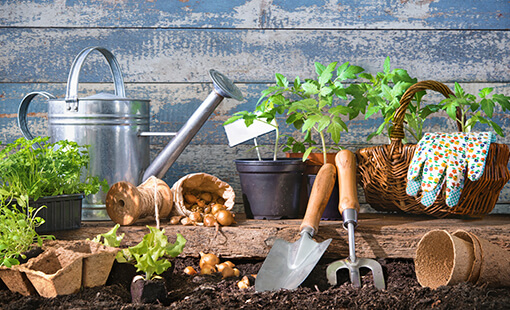
April in the Garden
April 3, 2023
After a long winter, we can’t wait to get outside and begin to garden. Here’s what can be done in April:
- Hardy perennials, strawberries, blackberries and raspberries can be planted, as well as “cold vegetables” like kale, broccoli and cabbage transplants and seeds of carrots, peas and spinach. Wait for the plants that need more heat – cukes, tomatoes, green beans….Adams’ Easy Vegetable Gardening Guide, has great tips and a planting schedule.
- Are your perennials too crowded? Now is a good time to divide them. If you have gaps in the garden, look for new perennials, shrubs and trees. And leave some room for annual flowers that will delight with gorgeous color through the summer (right up to frost)!
- When the dandelions bloom and temperatures reach into the 50s with some regularity, cut back the stems and seed heads of last season’s growth all the way to the ground, being careful not to slice through sprouting growth.
- When the forsythia bloom, it’s time to remove mulch from perennials and prune roses. Roses will benefit from the application of a slow-release fertilizer, starting now.
- If you haven’t already done this, get your garden tools clean and in proper working order.
- Prep garden beds – Remove weeds from overgrown gardens. Tidy beds are enticing and ready for this year’s crop!
And speaking of this year’s crop, here are a few tips:
- Soil is ready for planting when it’s not too wet and doesn’t clump.
- Carrots can be started from seed in April. Weeding can be a real chore, so here’s a tip: if the carrot seed is planted deep enough, the weeds will germinate in a couple of days before the carrots and can be burned off with a propane torch. This is called “flame weeding,” and is tricky but effective.
- Radishes – these veggies are always attacked by root maggots which hatch from the eggs of a small fly that comes along in early May. To prevent this damage, cover the radish patch with a special fabric designed to let in the light and water but keep out the pests (also protects from frost & birds).
- Beets can be planted in April and can be harvested up until Thanksgiving if they’re mulched with straw in October to keep the ground from freezing.
- Lettuce – The plants will grow faster if you cover them with hot caps. These are plastic covers made by cutting the bottom off a soda or water bottle and removing the cap. Or you can buy commercial hot caps. These can be removed after about two weeks. Harvest every other lettuce, leaving extra room for the remaining plants to grow. Keep those hot caps handy for veggies planted later on, like tomatoes.

 Sue Adams
Sue Adams